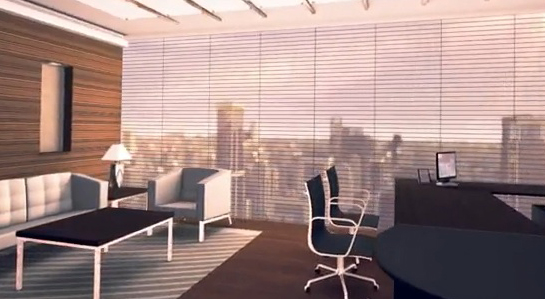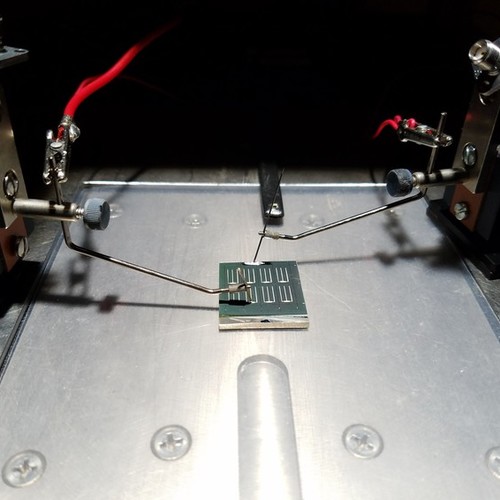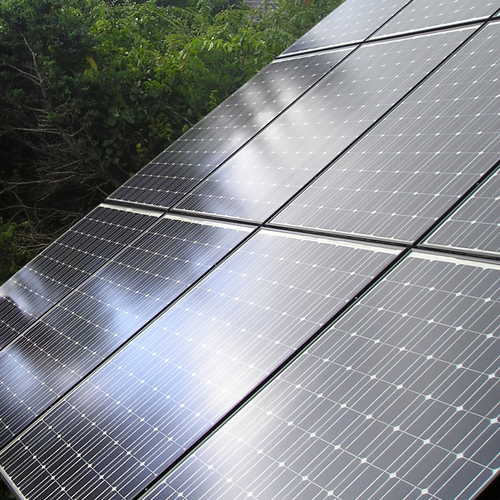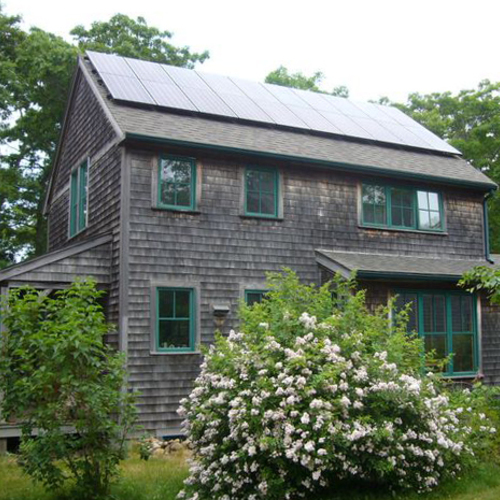Image Credit: Pythagoras Solar
Image Credit: Pythagoras Solar The photovoltaic lattice inside Pythagoras Solar’s double-pane window assembly is designed to deliver PV power and partially shade the building interior. Pythagoras Solar says its window assembly offers significantly more power density than thin-film photovoltaic technology.
Recent online news feeds have included a number of reminders that the drive to harness solar energy is alive and well. Thin-film specialist Ensol AS, based in Norway, is developing a photovoltaic cell technology that is at least 20% efficient. Another thin-film specialist, New Energy Technologies, based in Maryland, is designing an organic solar-cell coating, called SolarWindow, that can be applied to glass, convert artificial light to electric power, and outperform conventional rooftop photovoltaic systems of comparable size by 300%.
And on June 23, General Electric announced the winners of the latest round in the GE ecomagination Challenge program, which recognizes innovation in clean technology. Among the five winners was Pythagoras Solar, which has developed a photovoltaic window the company says will provide almost four times more power density, at about 13 watts per sq. ft., than thin-film PV coatings while also providing both shading and high transparency.
A high-profile test platform
The photovoltaic components of the windows – optical elements and PV cells sequentially mounted in evenly spaced horizontal rows – are sandwiched between glass panes, creating a miniblinds-like pattern across the entire assembly. The windows are “building-integrated photovoltaics” – in other words, the solar array is part of the building envelope. They are currently being designed for use in vertical curtain walls and skylights, although the technology also will be adapted to color roof tiles and to spandrels, according to the company.
The company, which has operations in Silicon Valley, Los Angeles, and Israel, has been monitoring its pilot installation – a couple of south-facing windows on the 56th floor of Chicago’s Willis Tower – since November. New Energy Technologies’ SolarWindow thin film also is being tested on the same floor of Willis Tower, using the same solar orientation.
No word yet on the test results, or on the prices of these products, although Pythagoras Solar’s CEO, Gonen Fink, told the San Francisco Chronicle that, by his estimate, the company’s windows would provide enough energy savings to pay for themselves in three to five years.
Weekly Newsletter
Get building science and energy efficiency advice, plus special offers, in your inbox.
















2 Comments
The devil is in the details
I think this is a great product/concept but when you start proposing to cover high rises in solar cells, the numbers assume that you will always have access to the sun, let alone proper orientation, and thats a big deal in urban areas. Unless you have easements or air rights in place, someone could build a taller building right next to yours and what about the sides of the building that don't face optimal solar exposures? I think 50% of this company's claims are hype and the rest is legitimate. And aesthetically, architects may have a hard time installing a specific curtain wall assembly on only one side or half of their building.
At the same time, my comments really apply to any solar installation but I guess I get a bit more concerned when we start postulating to power entire skyscrapers with PV, which in and of itself is a bold claim for the time being.
go
i don't see this exploding, especially since it starts to require different field specialties to bring the whole project together which increases costs and decreases availability, but it will help those who don't want a case of solar 'hemorrhoids' added to their roof; now they can be integrated into skylights and accent walls.
Log in or create an account to post a comment.
Sign up Log in